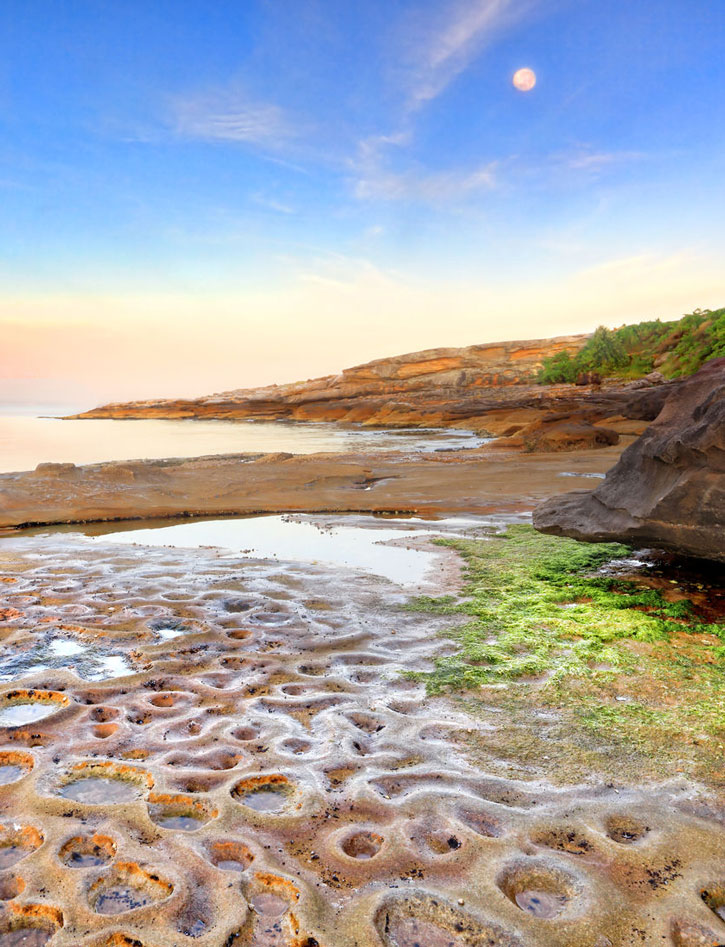
Sunrise on the shore of La Perouse in Sydney, New South Wales, Australia. Photo © Leah-Anne Thompson/123rf.
He was elected to the Royal Society and appointed to a joint Royal Navy/Royal Society scientific expedition to the South Pacific Ocean on the HMS Endeavour. This was the first of James Cook’s voyages of discovery into that region, and of huge importance to Australia’s history.
They set off and sailed via Brazil and other parts of South America, Tahiti, New Zealand, before finally reaching the New South Wales region of Australia. The time in Australia led to Banks’s second great passion, the British colonization of that continent. He was to be the greatest proponent of settlement in New South Wales, as is hinted by its early colloquial name: Botany Bay. The identification could have been even closer, as the name “Banksia” was reportedly proposed for the region by Linnaeus. In the end, a genus of Proteaceae, a flowering plant, was named in his honor as Banksia.
For his services to the crown and to science, he was made a baronet in 1781, three years after being elected president of the Royal Society. The latter position he would hold for a record 42 years. He played a large part in directing the course of British science for the first part of the 19th century. He was directly responsible for several famous voyages, including George Vancouver’s to the Pacific Northwest of North America and William Bligh’s voyages to transplant breadfruit from the South Pacific to the Caribbean Sea islands; the latter brought about the famous mutiny on the HMS Bounty.
During much of this time, Banks was an informal adviser to King George III of the United Kingdom on the creation of Kew Gardens, a position that was formalized in 1797. Banks dispatched explorers and botanists to many parts of the world; through these efforts Kew Gardens became arguably the preeminent botanical gardens in the world, with many species being introduced to Europe through them.
He died in London at the age of 77.
Excerpted from the First Edition of Moon Sydney & the Great Barrier Reef.